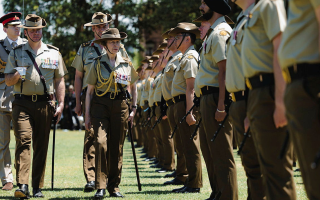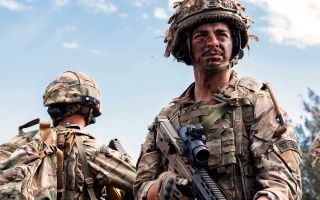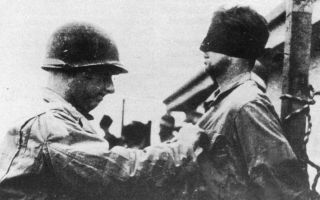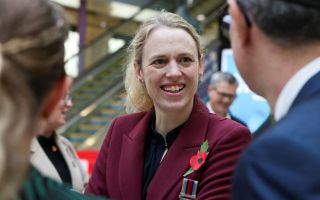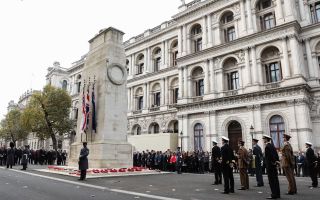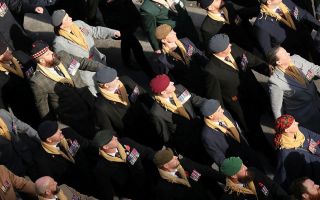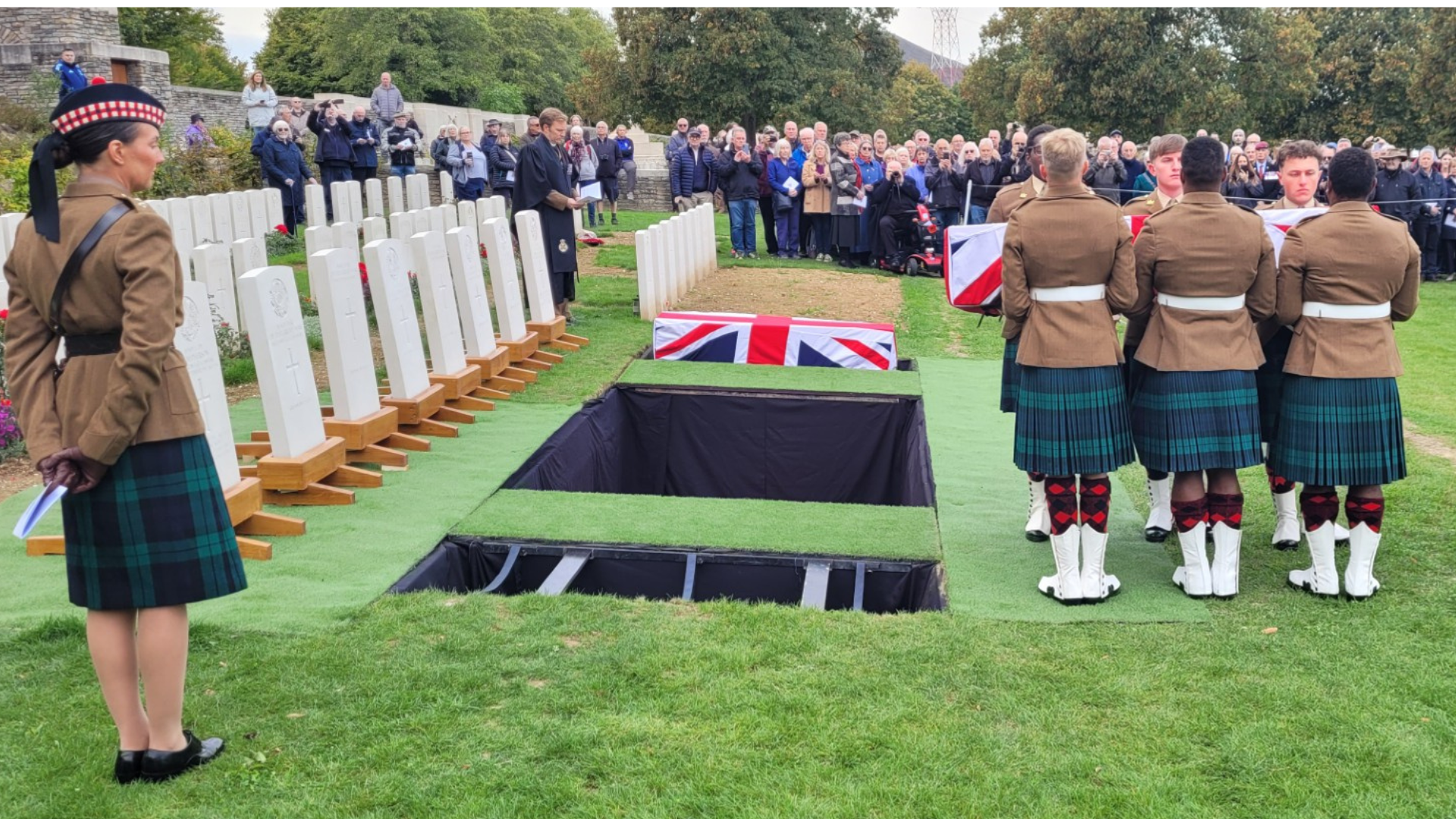
Scottish soldiers from World War One laid to rest, 110 years after their sacrifice

The families of two Scottish soldiers, who were killed in action 110 years ago, gathered in France for a special ceremony, where the men were laid to rest alongside their comrades.
The two men, Lieutenant James Grant Allan, 9th Battalion, Gordon Highlanders and Lance Corporal Gordon McPherson, 7th Battalion, Cameron Highlanders, were killed on 25 September 1915, the first day of the Battle of Loos.
Eight men in total were laid to rest at the Loos British Cemetery Extension, but the identities of the six others remain unknown.
- Words of Remembrance
- Gathering for burial to honour unknown soldiers and reflect on loss in Loos
- Princess Anne attends special burial service in France for two unknown WWI soldiers
A natural leader
Lt Allan left Edinburgh University to join the Gordon Highlanders in 1914, when the war was declared.
Known as "Jim" to his family, he was an enthusiastic games player and a natural leader among his cousins.
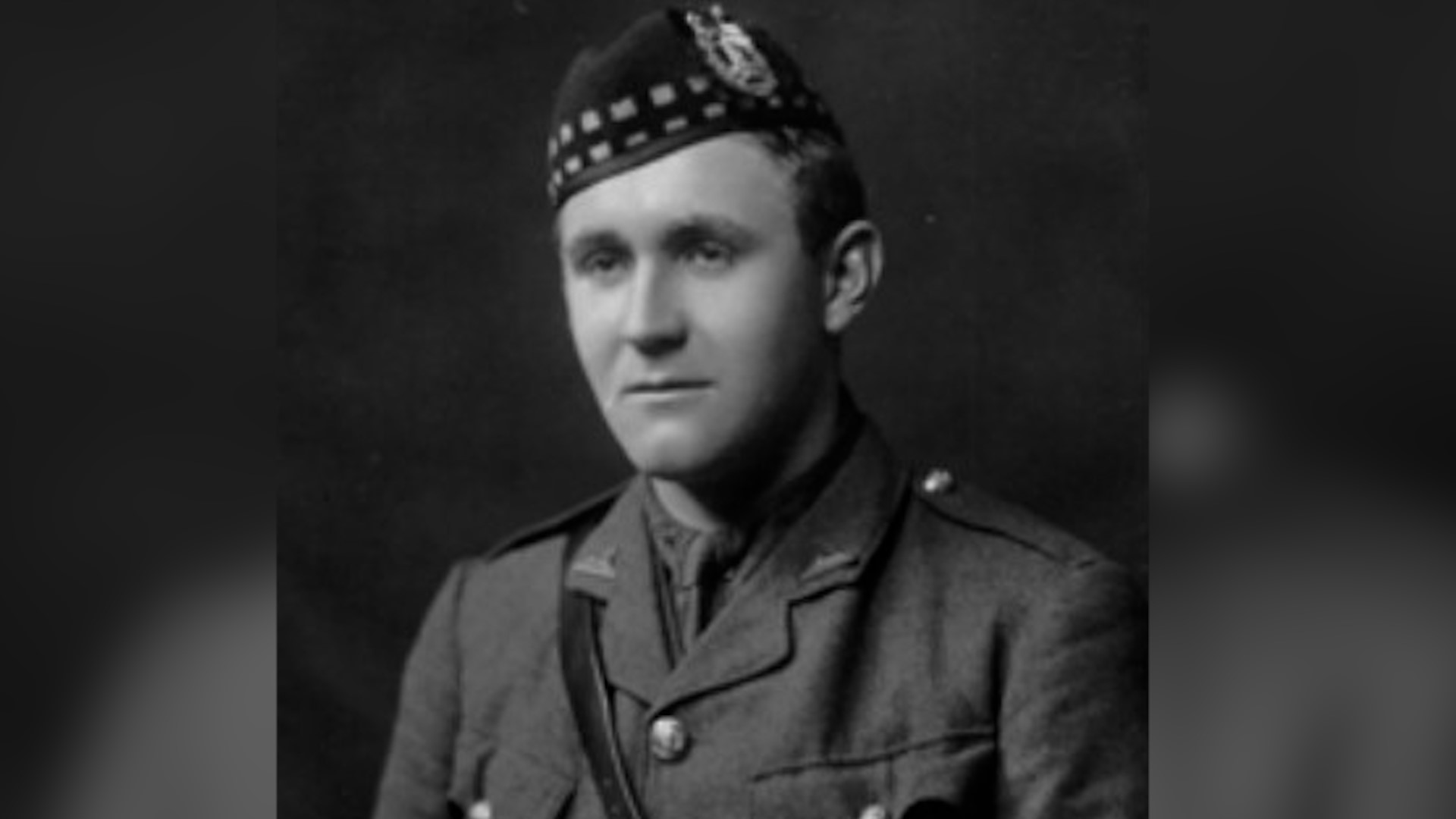
Studying the humanities, he kept a "commonplace book" in which he entered poems, which his sister Margaret continued after his death. He was very close to his sisters and wrote regularly to them, as well as to his parents, while he was away.
A friend and fellow officer wrote: "Jim's men thought the world of him.
"I have gained from his friendship. He may have left this world but only to go to a freer one... I have been strengthened by the thought of him, or his presence."
He was identified after artefacts found with the casualties suggested one was an officer, which narrowed the search. The families of the battalion's 14 missing officers were traced and tested, with Lt Allan's family proving a positive match.
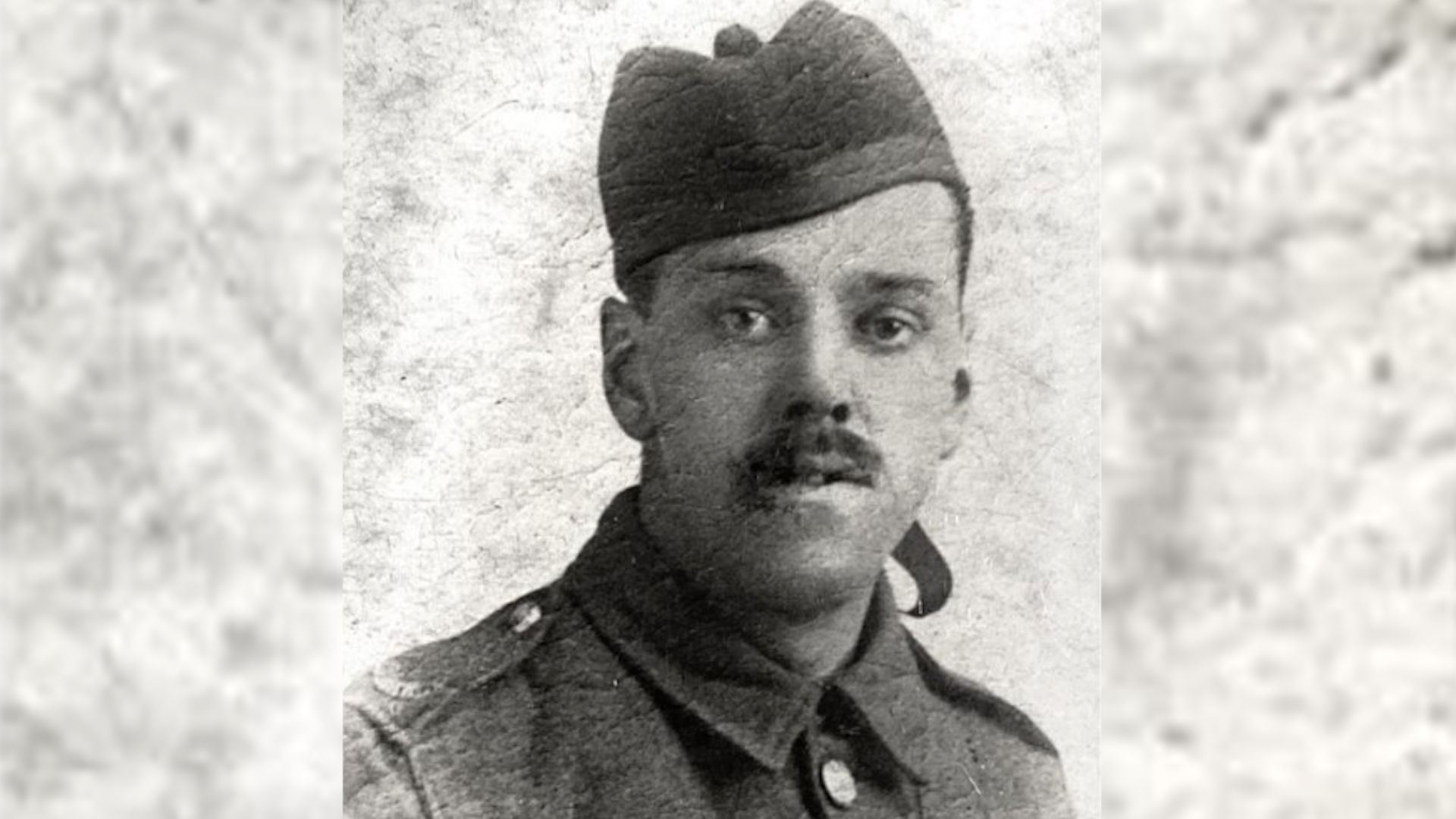
Life and soul of the section
LCpl McPherson was working as a tobacconist when he joined the Cameron Highlanders in November 1914 alongside his two brothers and their father.
He wrote regularly to his mother during the war and, in one of the last letters he sent her, he wrote: "So cheer up, Mother dear, and when this is over, look what a happy time we will have when your four soldiers come home."
A fellow soldier in his section described him as "the life and soul of the section", and his imitations of Charles Chaplin were "enjoyed very much" by his comrades.
"His favourite song, 'Trumpeter, what are you sounding now!', grew to be the most popular song in the section. It was Gordon's song. We can't sing it now," he said.
LCpl McPherson was identified by a small set of buttons from the Newcastle Corporation Tramway that he had in his pocket at the time of his death.
After reviewing the 1911 census, MOD war detectives, from the Joint Casualty and Compassionate Centre Commemorations team, found that LCpl McPherson's father worked for the Tramway, and a DNA test confirmed a match with his next of kin.
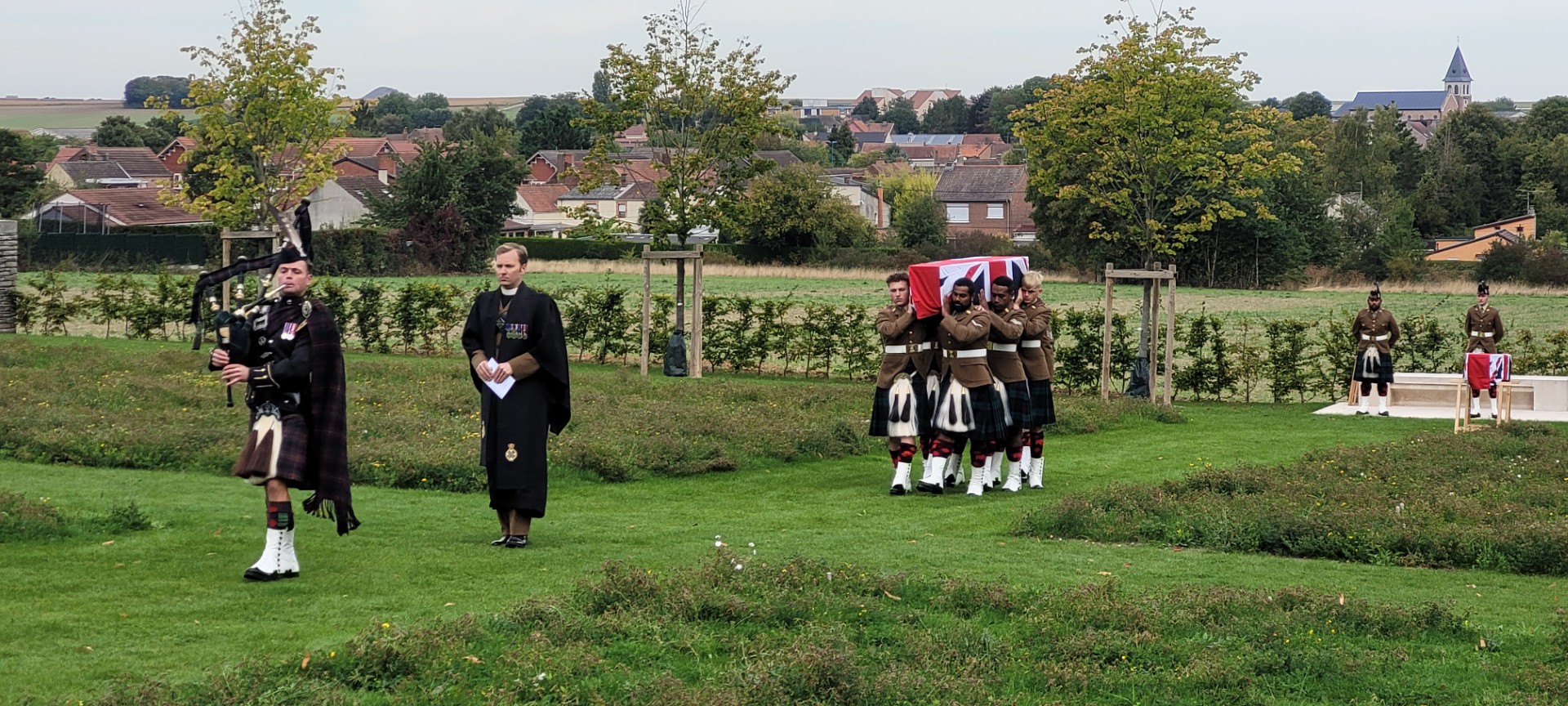
Nicholas Allan, a great-nephew of Lt Allan, said: "I feel very moved and honoured by the work of the MOD that it is honouring this great-uncle of mine who I barely knew existed.
"I feel a profound sense that something has been completed. It speaks to me of all those whose bodies were never found. I feel we're completing something for them too."
"It’s been emotional in a good way," said Alistair McPherson, a great-nephew of LCpl McPherson. "We have known Gordon all our lives because of the letters we have got, and it's just wonderful to have found him. He's no longer lost."
Nicola Nash, MOD War Detective, said: "Lt Allan and LCpl McPherson have both been buried today, 110 years after they were killed.
"With half a million British servicemen still missing from the First World War, every identity we make is a huge achievement. It has been a real privilege to give closure to their families and lay these heroes to rest with honour."
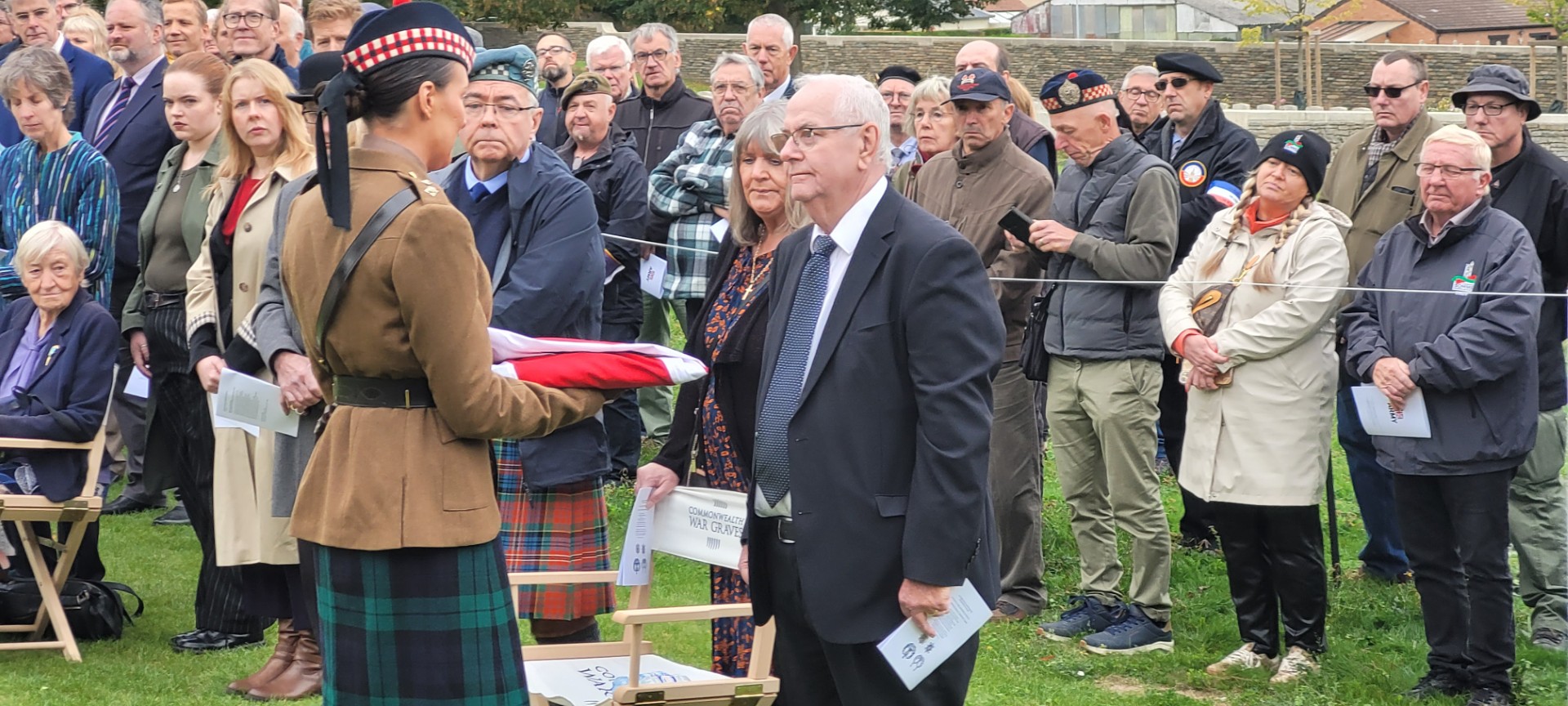
Jeremy Prince, director of the Commonwealth War Graves Commission France Area, added: "This cemetery, inaugurated just one year ago by Her Royal Highness The Princess Royal, was established to receive the remains of soldiers recently discovered [and those who may be found in the future] during ongoing work and research in the region.
"The ceremony also coincides with the 110th anniversary of the Battle of Loos – a poignant reminder of the sacrifices made during the First World War.
"We are proud to offer these soldiers a final resting place worthy of their courage and service. We will remember them."

